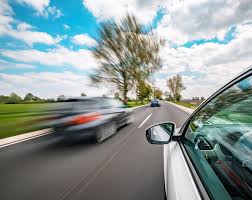It can be nerve-racking driving around the roads of Australia, given the large trucks that speed, on the off chance that you don’t avoid them. The wide, busy highways, bustling with truck activity, mean that safety distance is a prerequisite for all drivers. Aside from being a relatively mild (but annoying) road reaction, tailgating, or following too closely, is a serious reference to smoking joints. By understanding these risks, we can all take steps to ensure our safety and make the roads a safer place.
Understanding Tailgating
Rear-end collisions that stem from tailgating are anything but a minor annoyance; they can lead to serious injury or death. Having a vehicle tailgate another vehicle minimises the time available for sudden emergencies. This reduced response time can lead to collisions with cars, which can injure or even cause death. It gets worse if that car is a truck that is being tailgated. According to simple human biology, the bigger the vehicle, the longer the stopping distance. As a result, failing to keep a minimum distance behind a truck can lead to disastrous results.
Why Trucks Require Extra Space
Of course, trucks are larger and heavier than your average car. That translates into a longer braking distance. A typical vehicle at highway speeds requires around 40 metres to come to a stop. By comparison, a loaded truck might need almost double. And sticking close to a truck removes the space necessary for a safe stopping distance. Trucks have bigger blind spots, so it’s possible that the truck driver didn’t see a car that was following too closely either. Both drivers can see more and have more time to respond when a safe distance is maintained.
Impact on Reaction Time
One of the most critical factors for a driver in terms of road safety is modifying his or her reaction time. If a driver is tailgating, that reaction time is significantly hampered. This is because the person behind the wheel needs to respond to the vehicle’s speed in front, allowing almost no influence for others, where reactions are necessary. If the truck stops abruptly, a rear-end crash may occur. Keeping a safe distance between cars allows drivers to react calmly.
Legal Implications and Penalties
Besides being dangerous, tailgating is also illegal. It is unlawful for drivers to tailgate in Australia, and the penalties are severe. They can be punishable by fines and penalty points on a driver’s licence. These laws are intended to keep road users safe and to minimise accidents. When drivers show compliance with these regulations, it helps make the drive safe. Every road user needs to know the rules to avoid legal consequences.
Promoting Safe Driving Practices
Reducing tailgating incidents involves education and raising awareness. It is necessary to encourage drivers to follow safe driving practices, like keeping a distance of 3 seconds between vehicles. Do so with plenty of time to react and give it some throttle when the time is right. You should add some distance in bad weather because you can not see far, and the cars do not grip very well. Frequent campaigns and reminders can ensure these practices become integral to daily driving behaviour.
The Role of Technology
Most vehicles today feature technology that promotes safe driving. For instance, adaptive cruise control and collision warning systems can help drivers achieve adequate following distances. These technologies send alerts and sometimes take corrective actions if a vehicle approaches another vehicle too closely. Although technology can be a big help, drivers must pay attention and not depend entirely on these systems. The importance of human judgment and responsibility has not changed.
Wrapping Up
There is no doubt, however, that tailgating trucks is dangerous on Australian roads. Maintaining a safe distance goes beyond legal compliance; it is crucial to protecting the safety of all road users. Drivers can help create safer roads by knowing the potential risks, following traffic laws, and practising safe driving behaviour. Whether aided with technology or just with the help of our brain, keeping a safe distance is one of the most critical aspects of driving safely. Safety is a priority. We all want to get to our destination and back home safely.




